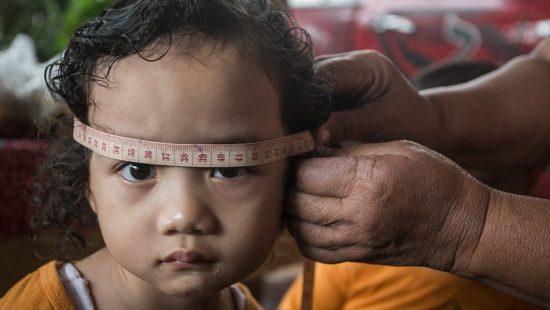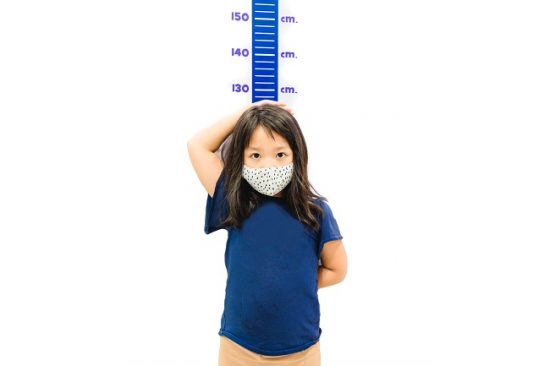The stunting prevalence rate in 2023 is expected to decrease in line with the government’s initial ideas. Previously, a discourse had been prepared to try to reduce the prevalence of stunting cases by 3% every year. This was stated in the Coordination Meeting which was attended by Minister of Finance Sri Mulyani, Minister of Health Budi Gunadi Sadikin, Minister of Communication and Information Johnny G. Plate Deputy Minister of Religion Zainut Tauhid, Head of BKKBN Hasto Wardoyo, Head of KSP Moeldoko, Head of BPS Margo Yuwono, as well as representatives of Echelon 1 of the Ministry of PPPA, Ministry of Social Affairs, Ministry of Home Affairs, Ministry of Public Works, Ministry of Education and Culture, Ministry of Agriculture, Bapennas, Minister of State Secretary, TNP2K, TNI-Polri in January 2022.
Stunting is one of the scourges that plague the discourse on Indonesia’s Golden Generation in 2045. Indonesia is predicted to top the demographic bonus of the productive age population. Stunting cases are certainly a problem if they are not resolved immediately. Therefore, multi-sector collaboration has been held to eradicate stunting in Indonesia since 2021.

In 2021, the results of the Indonesian Toddler Nutrition Status Survey (SSGBI) showed that as many as 5.33 million toddlers, or 24.4% experienced stunting. Even though the figure achieved is a decrease from the previous year, this figure is still quite far from the government’s target of 14% in 2024. Various programs have been launched to achieve this target.
So what exactly is stunting? Why is its existence so feared and threatens Indonesia’s Golden Generation 2045? Let’s review it together!
What Is Stunting?
According to WHO, stunting is a growth disorder or growth faltering caused by repeated infections and chronic malnutrition due to inadequate nutritional intake. Furthermore, in 2020 WHO stated that the condition of ‘short’ can be said to be stunting if the child’s length or height is less than -2 Standard Deviation (SD) on the WHO growth curve based on age.
Apart from nutritional intake, there are a number of other factors that trigger stunting, including:
- Insufficient calorie intake
- Poverty
- Education about feeding children under five and low stunting
- Cultural influences
- Cow’s milk allergy
- Low Birth Weight (LBW)
- Poor lifestyle and sanitation
- Congenital heart disease
- Chronic infections from diseases such as tuberculosis, diphtheria, pertussis, and measles (can be prevented by immunization)
- Pregnant women experience malnutrition or anemia
Addressing Stunting in Indonesia
As mentioned, many sectors have been instructed to contribute to handling stunting in Indonesia. One of the leaders in this program is the Ministry of Health. The ministry in charge of health issues in Indonesia has launched three main efforts to resolve stunting cases in Indonesia. Based on the Healthy My Country page from the Ministry of Health, here are three efforts by the Ministry of Health to reduce stunting in Indonesia:
- The first effort was to provide TTD (Blood Addition Tablets) for young women. This program has started to be packaged under the name of Action for Nutrition in Schools with an intervention package including providing weekly TTD, physical activity, and consumption of balanced nutritious food.
- The second effort is giving TTD (blood supplement tablets), pregnancy checks, and providing additional food for pregnant women. This program is implemented to meet the nutritional and iron needs of pregnant women so that the condition of the fetus in the womb remains healthy and its nutrition is met.
- The third effort is to provide food containing animal protein to children aged 6-24 months. The animal protein in question includes eggs, fish, chicken, meat, and also milk.

The three efforts above are mentioned as the most urgent efforts and must be implemented immediately. Furthermore, the Ministry of Health also stated that anthropometric measurement methods and ultrasound monitoring are important for detecting stunting conditions early.
Projections of Stunting Prevalence Rate Reduction in 2023 and 2024
As widely recognized, the prevalence of stunting in Indonesia, as per the findings of the 2022 Indonesian Nutrition Status Survey (SSGI), stands at 21.6%. This indicates a decline in cases compared to the preceding year when the stunting prevalence rate in 2021 was recorded at 24.4%. Consequently, there is a notable 2.8% reduction in stunting cases within a one-year period. It is noteworthy that this decrease is close to the government’s annual target of a 3% reduction in stunting cases.

Nevertheless, this percentage still falls below the 20% standard set by the World Health Organization (WHO). Since 2018, the Indonesian government has actively championed initiatives to combat stunting as a key national priority, achieving notable progress in its implementation. Over a span of four years, there has been a significant 9.2% point reduction in stunting cases, declining from 30.2% in 2018 to 21.6% in 2022. Designating stunting management as a national priority facilitated a 1.5 times faster decrease in cases compared to the previous period of 2013-2018. This success has rescued 2.6 million children from stunting, reducing the number of stunted children from 7.3 million in 2018 to 4.7 million in 2022.
Also Read: About Stunting Prevalence: Definition, How Is It Measured, and It’s Purpose
Meanwhile, in 2023 the government is targeting a drastic reduction in stunting prevalence or cases. The Head of BKKBN, Hasto Wardoyo, said that the stunting prevalence rate target at the end of 2023 must decrease by 3.8% so that the percentage of stunting becomes 17.8%, so that a reduction in stunting of up to 14% in 2024 can be achieved based on the principle of reducing prevalence by 3% per year.
There are records of the number of stunting prevalence or cases during 2023 compiled by the DIRECTORY OF REGIONAL DEVELOPMENT – Ministry Of Home Affairs. Case records can be seen based on the prevalence of provincial areas in Indonesia at the following link:
LINK TO THE NUMBER OF INDONESIAN STUNTING CASES 2023 MINISTRY OF HOME AFFAIRS
Meanwhile, the final accumulation of stunting prevalence figures for 2023 will usually be released by the SSGI (Indonesian Nutrition Status Survey) in early 2024.
In order to ensure the success of the stunting reduction acceleration program, it is crucial for the government to prioritize the use of anthropometric measuring tools for accurate and precise assessment of nutritional status. The following recommendations outline the use of anthropometric measuring tools to prevent stunting effectively :
Recommendations for Anthropometric Measuring Instruments to Prevent Stunting
Anthropometric Kit – SK TKDN produced by PT Solo Abadi Indonesia is a package of anthropometric measuring tools to detect stunting in toddlers. This package consists of a Portable Stadiometer, Infantometer Board, Digital Adult Scale, Digital Baby Scale, LILA Tape, and an Anthropometric Bag. The specifications for the Anthropometric Kit – SK 17 have been adapted to KMK HK 01.07/MENKES/1919/2022 regarding the complete specifications for the anthropometric kit package. Solo Abadi’s Baby Scales and Digital Adult Scales are connected to the MetrisisApp application which can be downloaded on the Google Play Store.

Contact Us for Order
Get and order anthropometric measuring instruments at the best prices from Solo Abadi by filling in the available ask-for price. You can also connect directly via WhatsApp, we are ready to contact you immediately.


